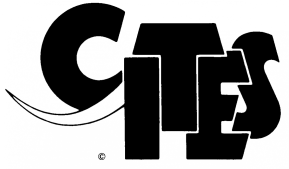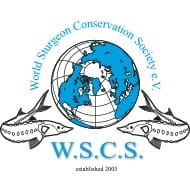LEARN THE QUALITY OF CAVIAR FROM THE LABEL
FIND OUT HOW TO READ IT
According to the Codex Alimentarius real caviar comes from the roe of fish belonging to the Acipenseridae e Huso family, i.e. sturgeon.
The roe of other types of fish, or of other animals, or even artificial products made with other organic substances, although they are advertised with misleading names and sometimes explicitly called “caviar” are not caviar but substitutes (surrogates) or imitations, which cannot be remotely compared with the value, refined flavour and organoleptic properties of real caviar.
To know what you are buying it is extremely important to understand the label on the back of the packaging. The label observes the labelling instructions of the “Convention on International Trade in Endangered Species of Wild Fauna and Flora” (CITES), used throughout the world as obligatory for sturgeon roe. This is the only way the consumer can find out about the species of sturgeon that has produced the caviar involved, its origin, whether wild or farmed, the country of origin, the year of production, the producer and batch and, if applicable, its re-packaging.

CERTIFIED QUALITY

In combination with sustainability, quality is the basis of our business. Confirming the ongoing pursuit of excellence, we have obtained IFS certification proving our company’s constant commitment to ensure high safety standards, quality and compliance with the norms that regulate the agro-food industry with utmost care to customer’s requirements.
ENVIRONMENTAL SUSTAINABILITY OF FARMED CAVIAR

Sturgeon is currently one of the species in danger of extinction included in the Washington Convention, whose breeding and sale are protected by CITES (Convention on International Trade in Endangered Species of Wild Fauna and Flora).
Purchasing caviar originating from an authorised farm and characterised by appropriate labelling is a valid commitment to supporting those who contribute legally to the preservation of this beautiful species of fish. By discouraging poaching and wild fishing of the few remaining specimens in their natural environment and reporting illegal channels of sale which often involve caviar produced in precarious sanitary conditions, we help the survival of a species that has maintained its prehistoric characteristics for millennia. The most important step to getting good caviar is related to the growth of the fish. When the balance of the species must be respected, the environment where the specimens live should be as similar as possible to the natural one. Breeding sturgeon is therefore a valid way of preserving this species and also repopulating our rivers where the sturgeon was indigenous in the past, something that has been absent for years.

Caviar Giaveri is a sustaining member of the World Sturgeon Conservation Society.
The World Sturgeon Conservation Society (WSCS) is an international association of scientists. Its aim is to conserve existing sturgeon populations worldwide and help in their restoration. The society pursues this goal by promoting sturgeon research, holding workshops and conferences, promoting the exchange of sturgeon-related information between scientists and politicians, and by informing the general public about sturgeons.

Caviar Giaveri is a sustaining member of the Italian Fishfarmers Society since the beginning of its history.
The Italian Fishfarmers Society is a non-profit corporation. It aims to protect, develop and consolidate all activities related to fish-breeding both in fresh and in salt and brackish waters.
Consequently, it promotes any financial, scientific, technical, insurance, professional, union and legal interventions which may prove necessary to reach this target.
Caviar Giaveri breeds the following species: Acipenser gueldenstaedtii (Russion Sturgeon) , Acipenser baerii (Siberian Sturgeon), Acipenser stellatus (Starry Sturgeon), Acipenser transmontanus (White Sturgeon), Acipenser persicus (Persian Sturgeon), Acipenser ruthenus (Sterlet Sturgeon), Acipenser ruthenus albino (Sterlet Albino Sturgeon), Huso huso x Acipenser baerii (Beluga x Siberian), Huso huso x Acipenser naccarii (Beluga x Adriatic), Huso huso (Beluga).

